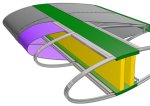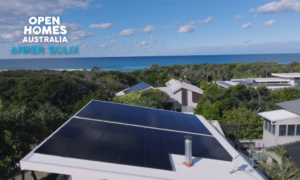GE, Virginia Tech and the National Renewable Energy Laboratory have commenced a project to create covered wind turbine blades, which could make wind power even cheaper.
According to GE, the new design could slash the costs of blades by 25%-40%, making wind energy as economical as fossil fuels – and without government subsidies.
The project will focus on the use of architectural fabrics tensioned around metal frames. Currently, conventional blades are made from fiberglass; which is heavy, time-intensive and expensive to manufacture.
The basic technology has already been proven; dating back to World War I when airplane frames were covered with tensioned fabrics.
Lighter blades could capture more energy at lower wind speeds, as well as allowing for longer blades to be developed than the current maximum of 120 meters. Additionally, the blades could be made on-site, removing further manufacturing and transportation challenges.
An example of some of the logistical headaches involved with transporting large blades we touched on in our story from August about Siemens B75 blades. Measuring 75 metres in length and weighing 25 tonnes each, the B75’s needed to be transported 320 kilometres and each required the use of a 680 horsepower truck to move them to their destination.
“Developing larger wind blades is the key to expanding wind energy into areas we wouldn’t think of today as suitable for harvesting wind power,” said Wendy Lin, a GE Principal Engineer and leader on the U.S. Department of Energy’s Advanced Research Projects Agency (ARPA-E) project.
“Tapping into moderate wind speed markets, in places like the Midwest, will only help grow the industry in the years to come.”
GE’s blades will be built to achieve a 20 year life without requiring regular maintenance to the tension fabrics and the company says it has already started using fabric covered metal frames in the construction of wind towers.
The $5.6M ARPA-E project will run for three years.














































